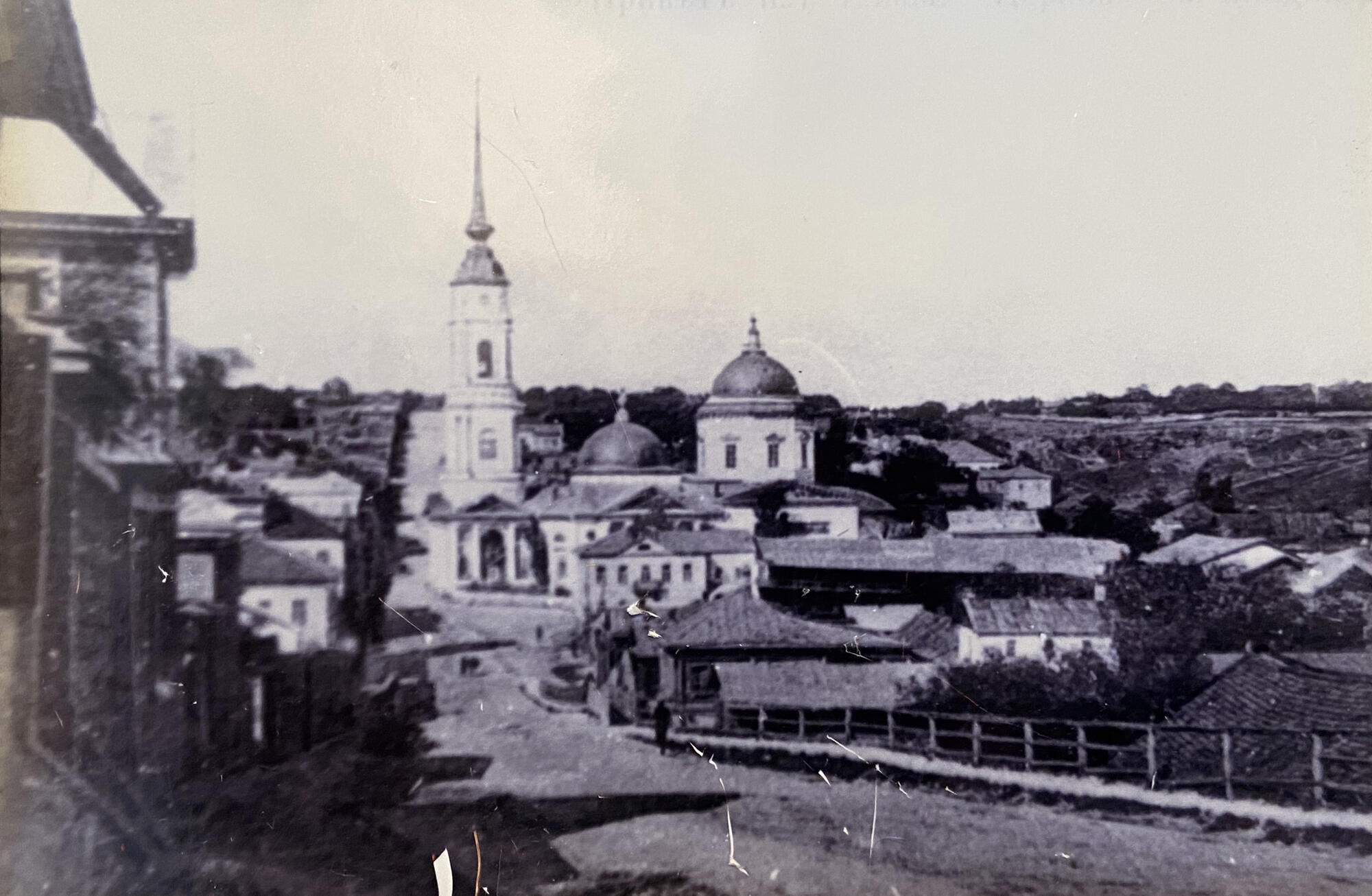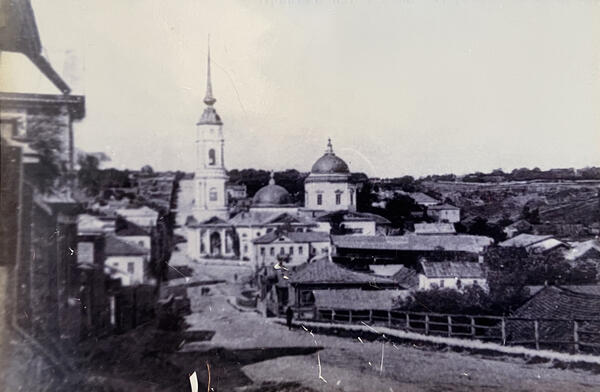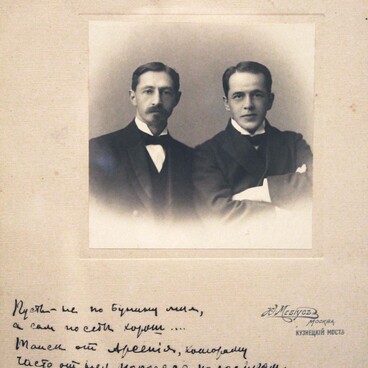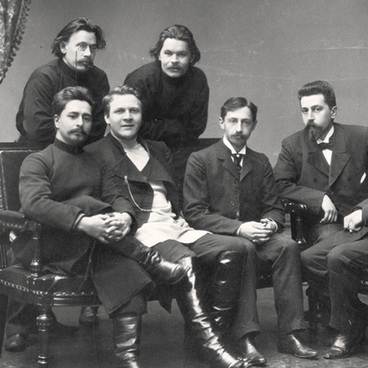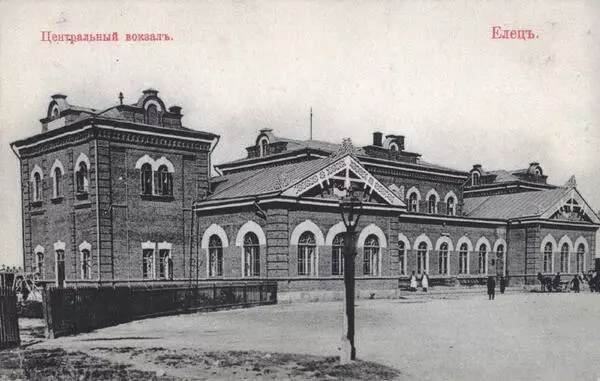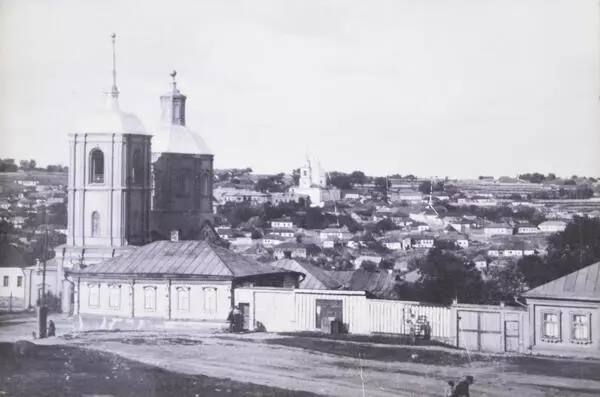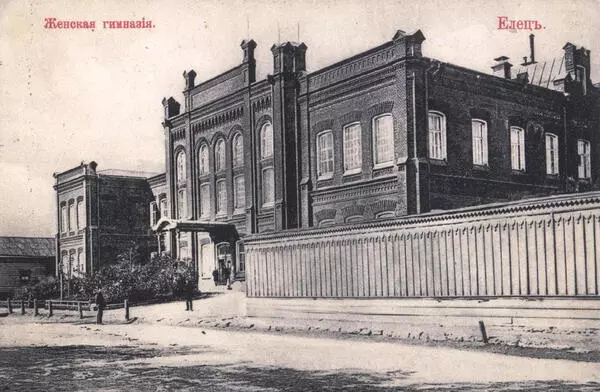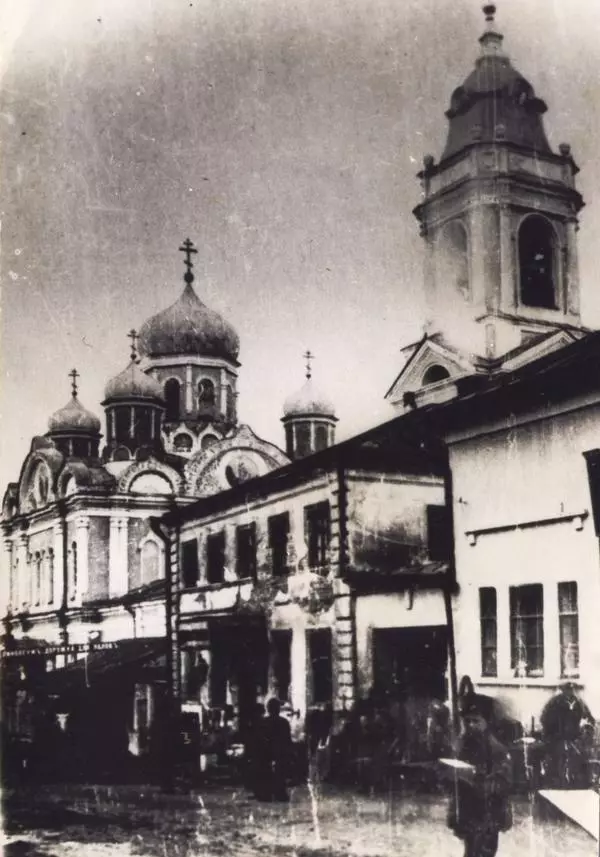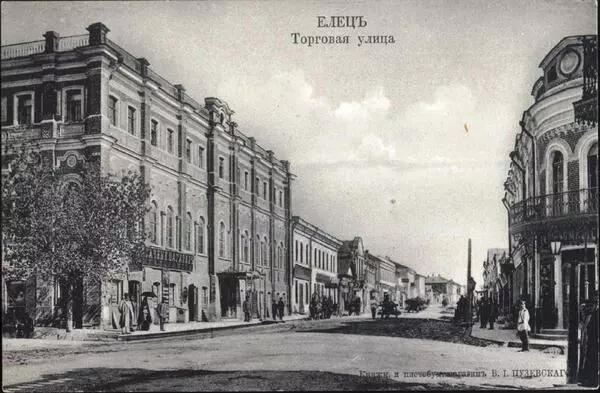The picture taken northwards, from Staromoskovskaya street, from the hill, one can see so-called Black Quarter. This name relates to the status of the land where the craftsmen could live. The ‘black’ lands were tax-liable, in contrast to the ‘white’ lands where the residents didn’t have to pay any charges or taxes. This residential quarter has long accommodated the small-scale handicraft production. Among the residents of this quarter were tanners and saddlers, shoemakers and furriers, carpenters and woodworkers — in other words, those who were in charge of provisioning for the military population of the city, who supplied clothing, shoes, weapons and household items.
There is a legend which is probably supported by a historical fact. Tsar AlexEy Mikhailovich was passing Yelets in a nasty weather. The roads were so dirty and the mud was so thick, that the Tsar’s carriage got hopelessly stuck in the center of the Black Quarter. Then the local residents unharnessed the exhausted horses, and pulled the carriage out of the mud, taking it uphill on their hands and dragging it all the way to the village of Rogatoye. And the Tsar ordered to grant them a plot of land, across which he passed in such an unusual way. The residents had kept the Tsar’s Charter for a long time, but they did not save it during the great fire.
One of the heroes of Bunin’s ‘Village’, TIkhon Krasov, grew up in the Black Quarter: ‘In the Black Quarter he spent his childhood - on this hill, among the low mud huts with rotten and blackened roofs, among the manure cakes which were dried in front of the houses to be used as fuel, among garbage, ashes and rags… Now there was no trace of the hut where Tikhon Ilyich was born and grew up. It was replaced by a new plank-made house with a rusty sign over the entrance: “Spiritual tailor SObolev”. Everything else in that settlement was the same as before: pigs and chickens lying at the doors; long poles at the gates, and on the poles there were the ram horns; big white faces of lace-makers looking from behind the rows of flower pots on tiny windows; barefoot boys with one shoulder strap, running about and flying a kite with a washcloth tail; blond, quiet girls playing their favorite game - the funeral of dolls… On the hill, in the field, … there was a cemetery, there, among the old trees, there was a terrible grave of the rich and miser ZYkov, which dropped through the same moment when it was filled with earth’.
In the center of the photo there is VladImiro-SErgievskaya Church. It was founded to commemorate the miraculous salvation of Russia from the Tamerlane’s invasion. The Church was dedicated to the icon the Virgin of Vladimir. And the second part of its name the Church received from the name of the chapel dedicated to St. Sergius of Radonezh. The wooden Church in the Black Quarter was built in the 17th century. The stone church building was erected in 1779, and the high bell tower was built in 1809. It was one of the most elegant churches in the city.
There is a legend which is probably supported by a historical fact. Tsar AlexEy Mikhailovich was passing Yelets in a nasty weather. The roads were so dirty and the mud was so thick, that the Tsar’s carriage got hopelessly stuck in the center of the Black Quarter. Then the local residents unharnessed the exhausted horses, and pulled the carriage out of the mud, taking it uphill on their hands and dragging it all the way to the village of Rogatoye. And the Tsar ordered to grant them a plot of land, across which he passed in such an unusual way. The residents had kept the Tsar’s Charter for a long time, but they did not save it during the great fire.
One of the heroes of Bunin’s ‘Village’, TIkhon Krasov, grew up in the Black Quarter: ‘In the Black Quarter he spent his childhood - on this hill, among the low mud huts with rotten and blackened roofs, among the manure cakes which were dried in front of the houses to be used as fuel, among garbage, ashes and rags… Now there was no trace of the hut where Tikhon Ilyich was born and grew up. It was replaced by a new plank-made house with a rusty sign over the entrance: “Spiritual tailor SObolev”. Everything else in that settlement was the same as before: pigs and chickens lying at the doors; long poles at the gates, and on the poles there were the ram horns; big white faces of lace-makers looking from behind the rows of flower pots on tiny windows; barefoot boys with one shoulder strap, running about and flying a kite with a washcloth tail; blond, quiet girls playing their favorite game - the funeral of dolls… On the hill, in the field, … there was a cemetery, there, among the old trees, there was a terrible grave of the rich and miser ZYkov, which dropped through the same moment when it was filled with earth’.
In the center of the photo there is VladImiro-SErgievskaya Church. It was founded to commemorate the miraculous salvation of Russia from the Tamerlane’s invasion. The Church was dedicated to the icon the Virgin of Vladimir. And the second part of its name the Church received from the name of the chapel dedicated to St. Sergius of Radonezh. The wooden Church in the Black Quarter was built in the 17th century. The stone church building was erected in 1779, and the high bell tower was built in 1809. It was one of the most elegant churches in the city.
